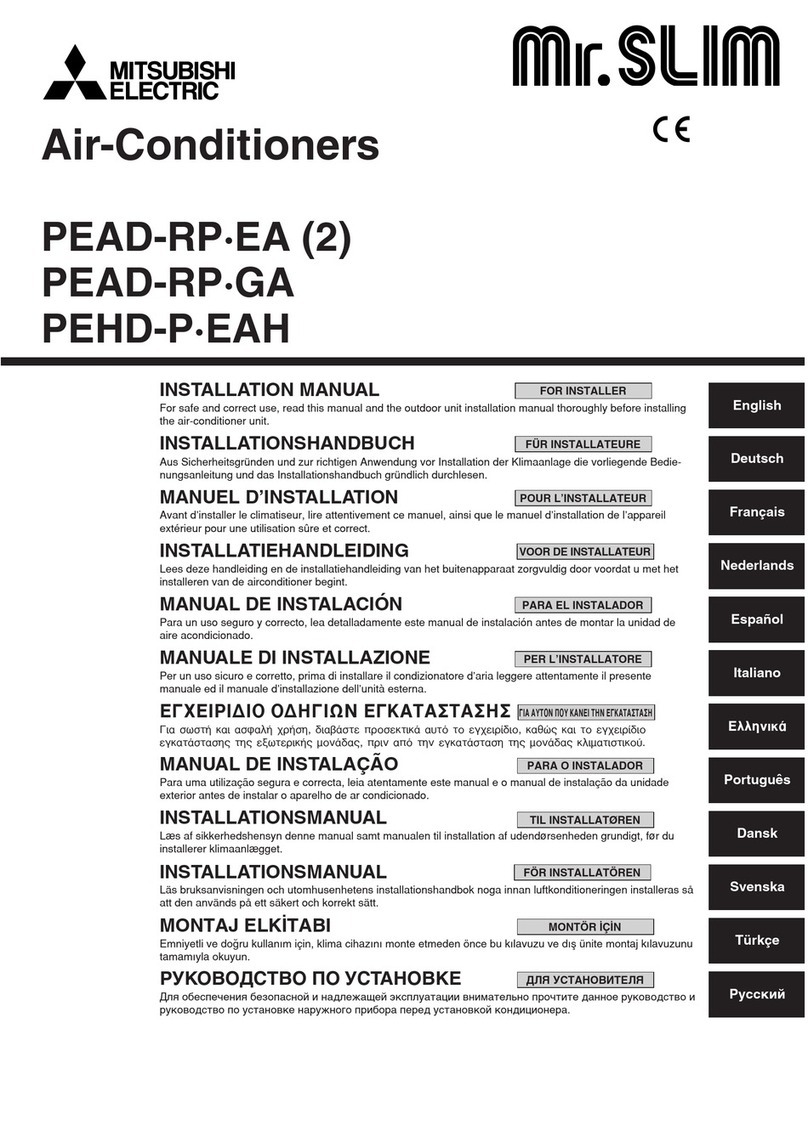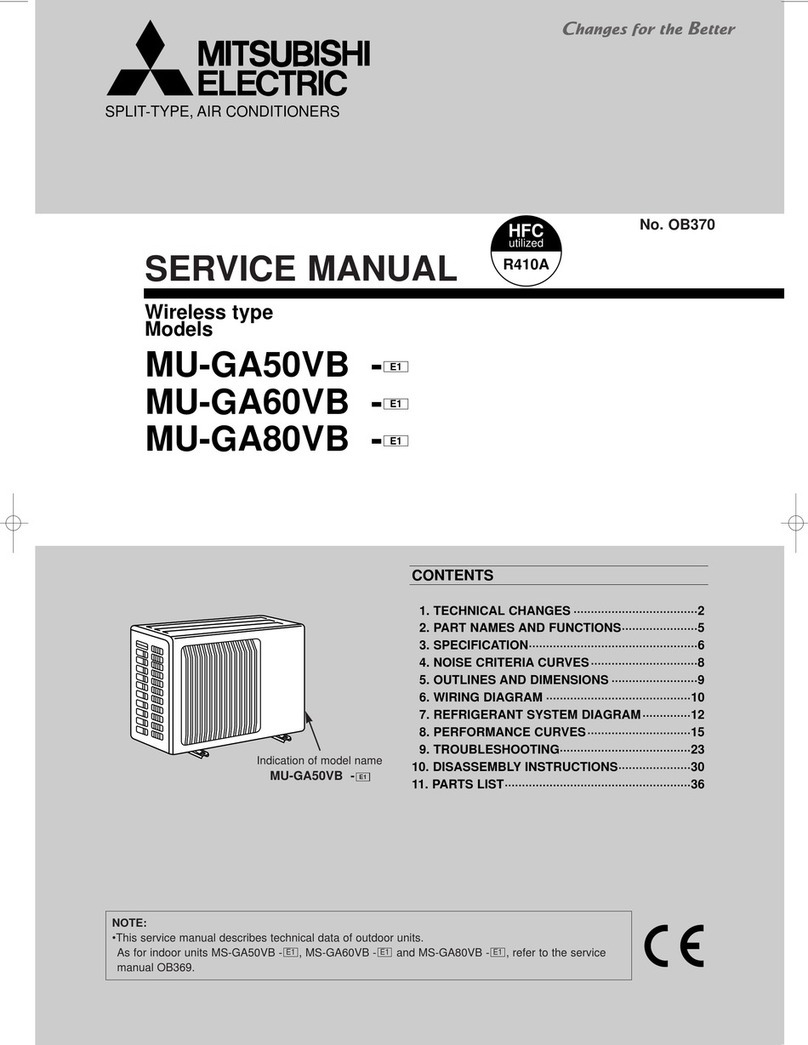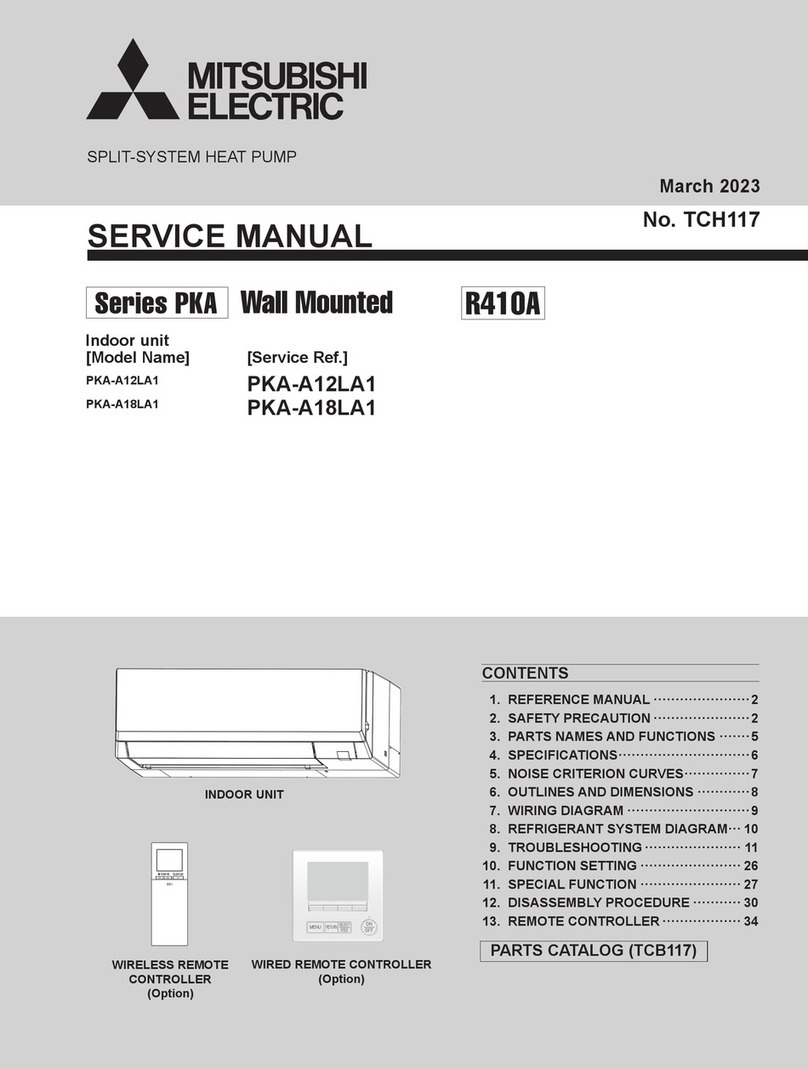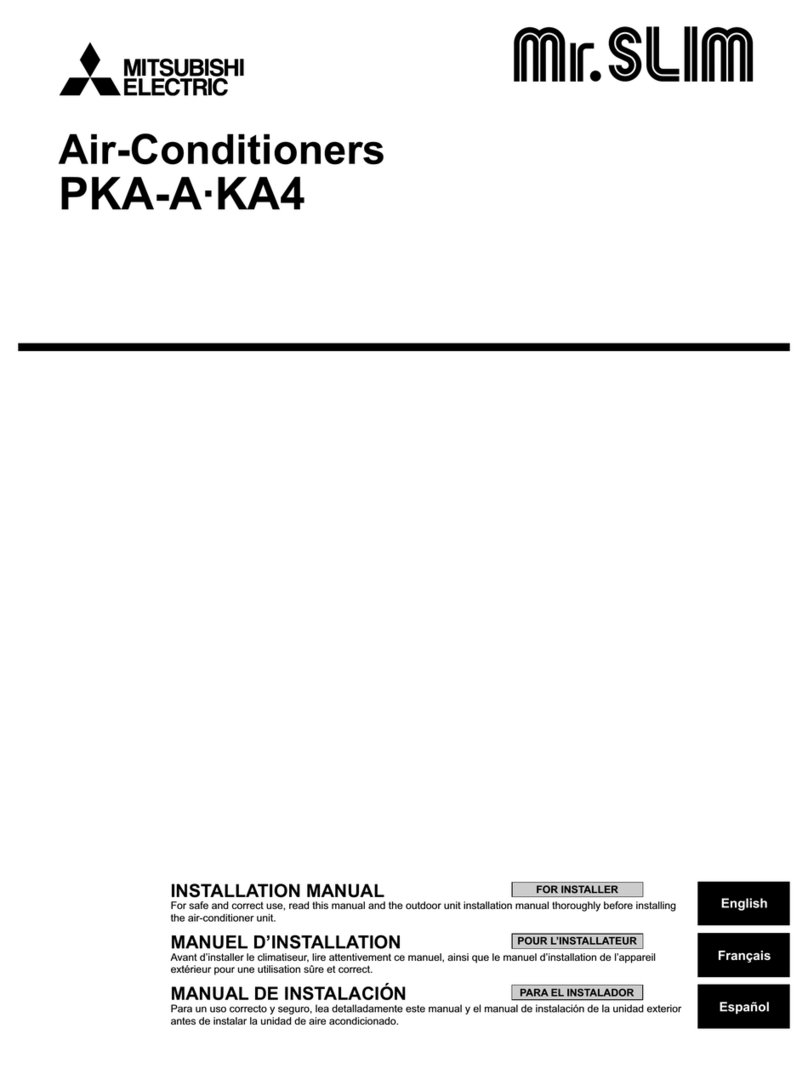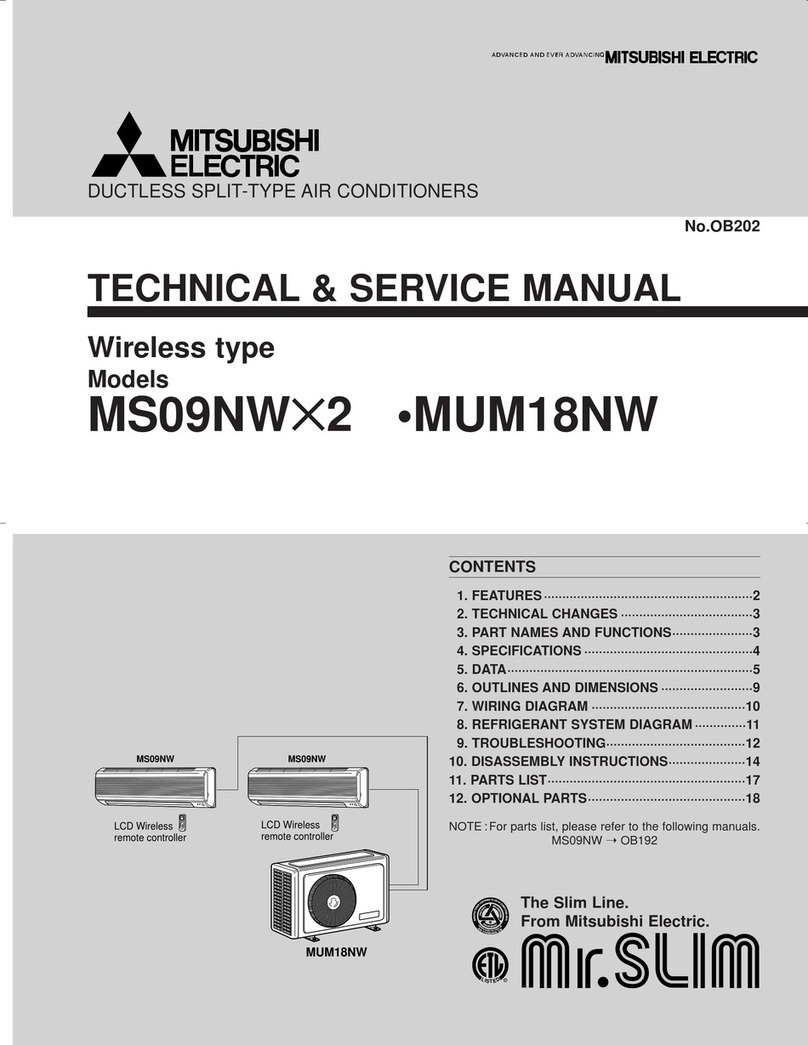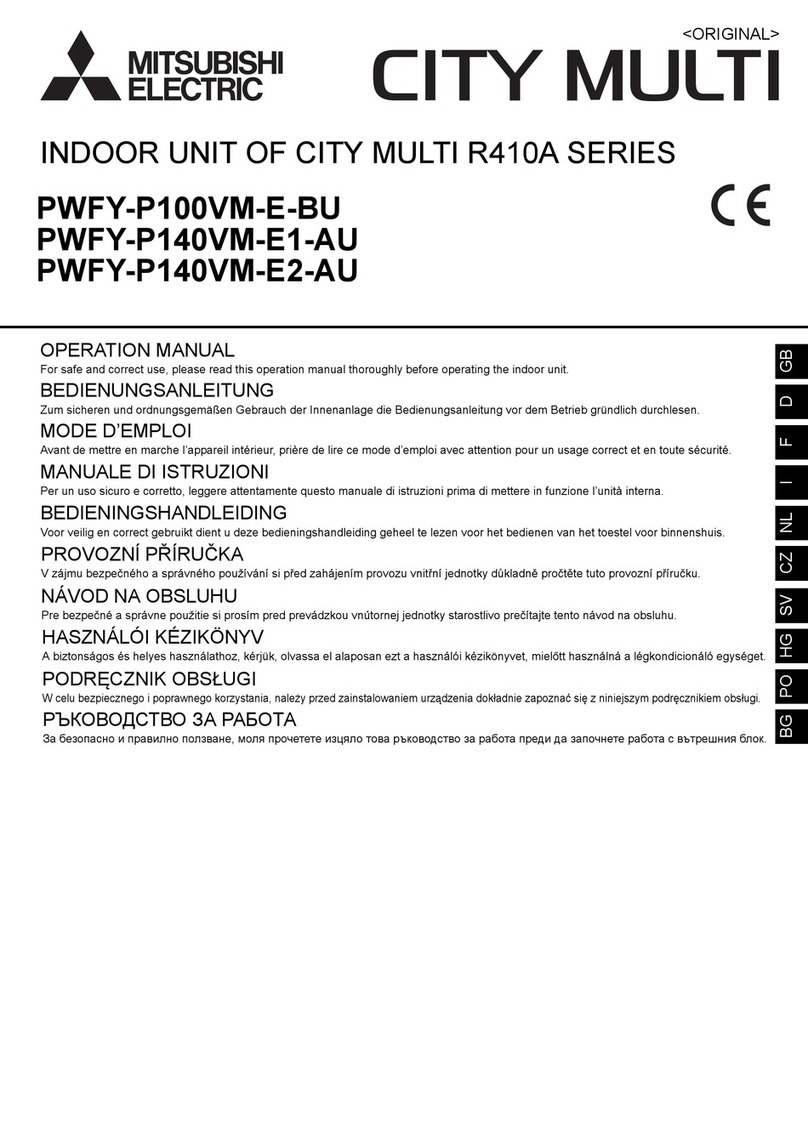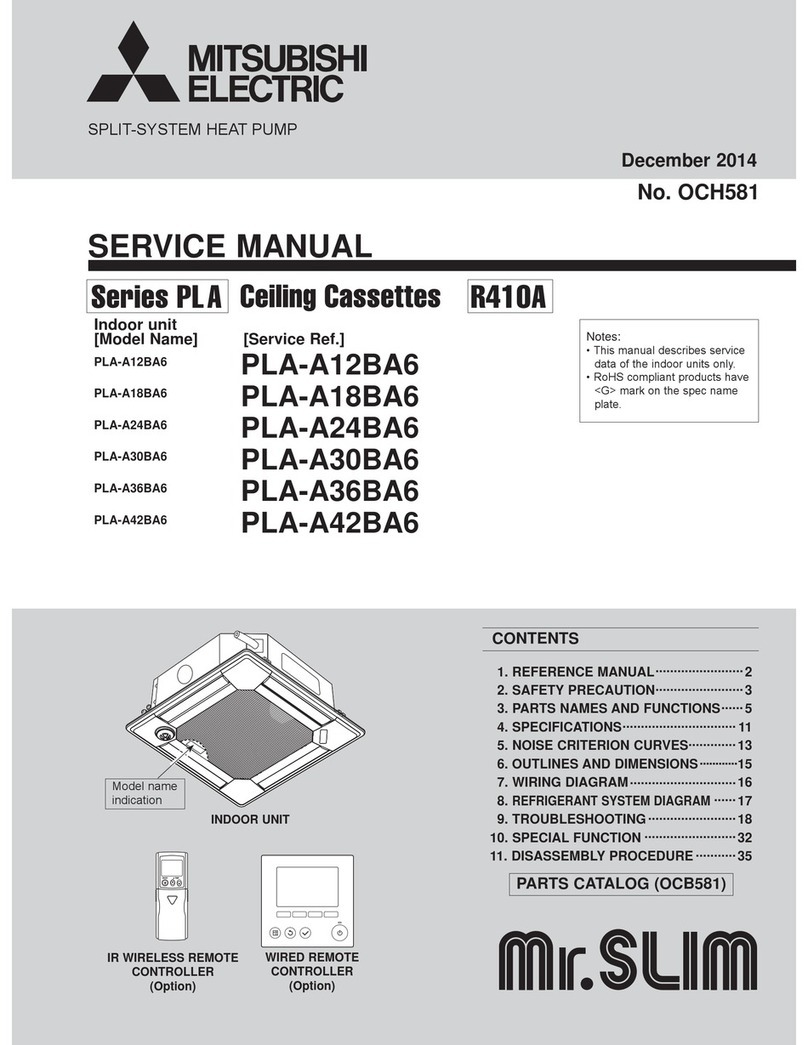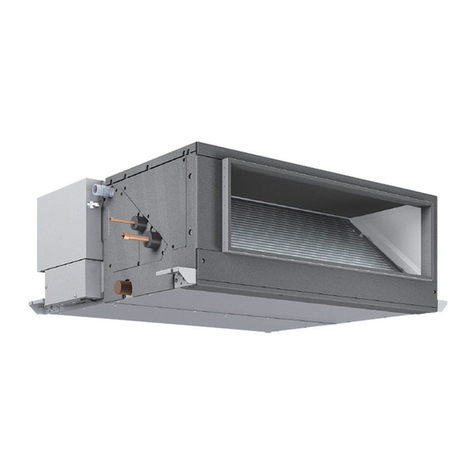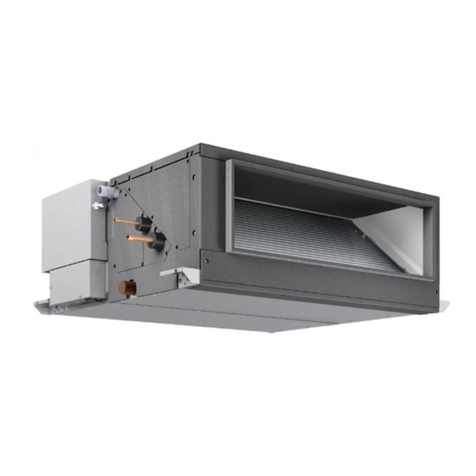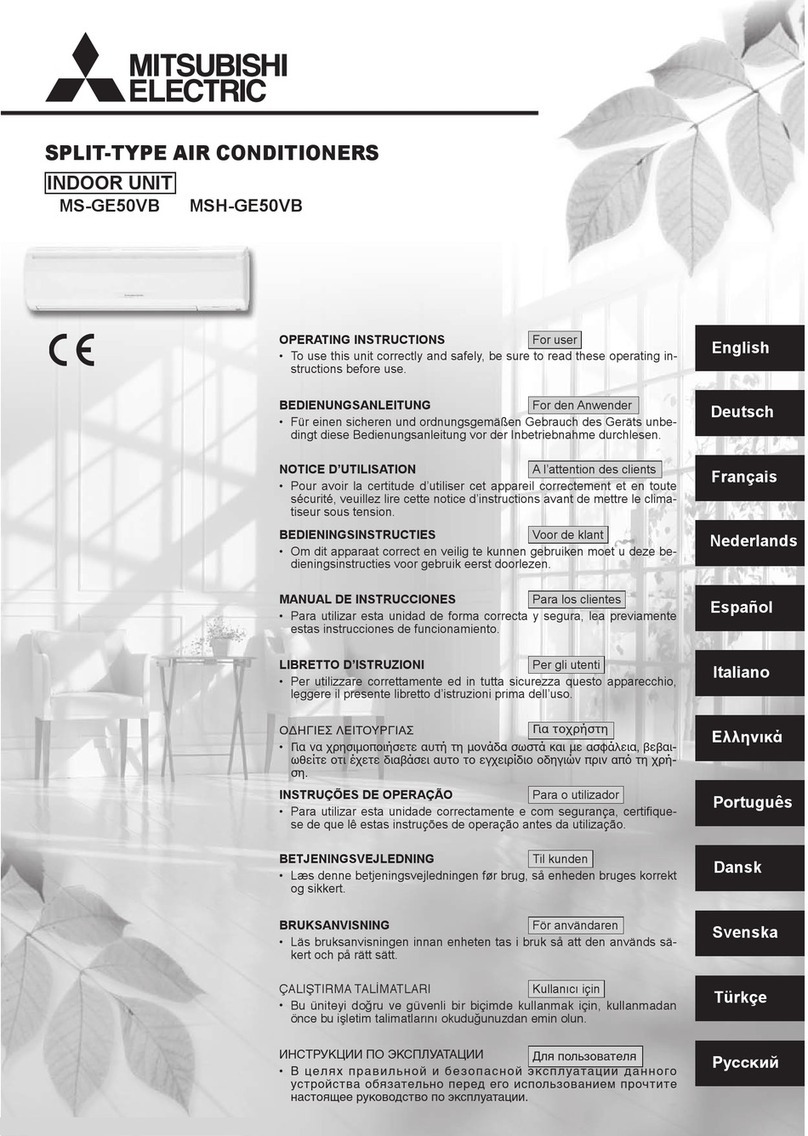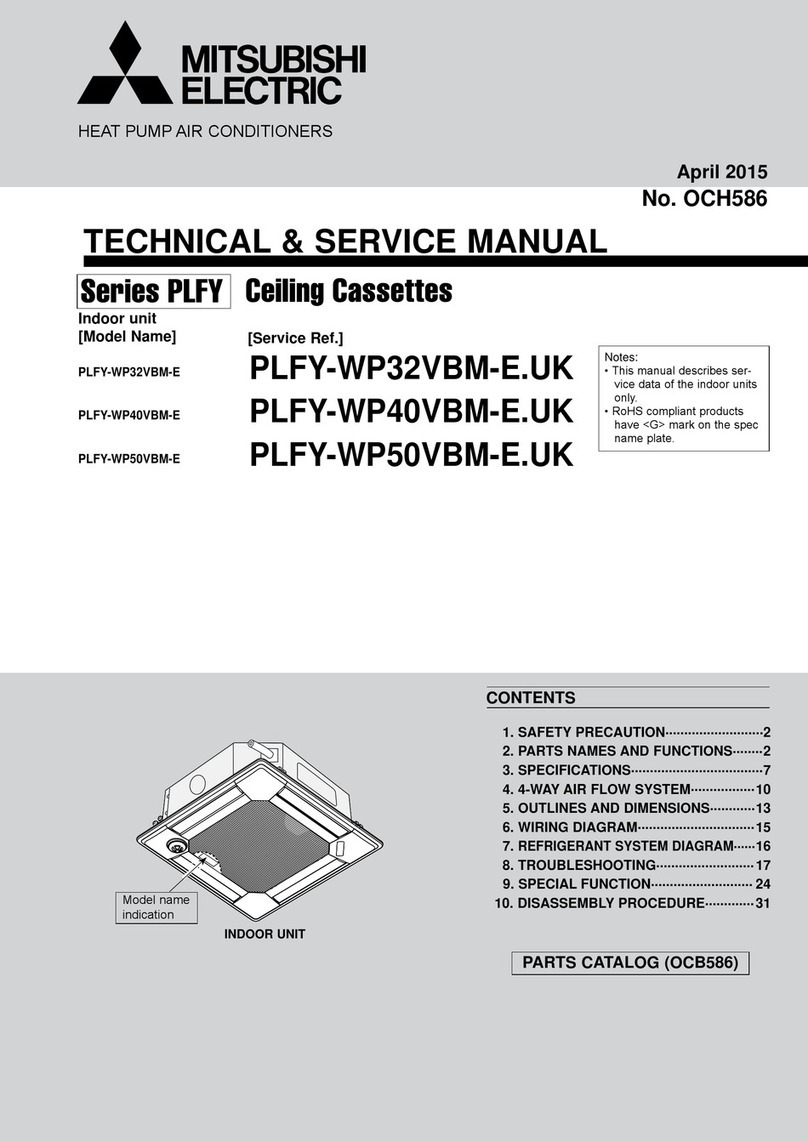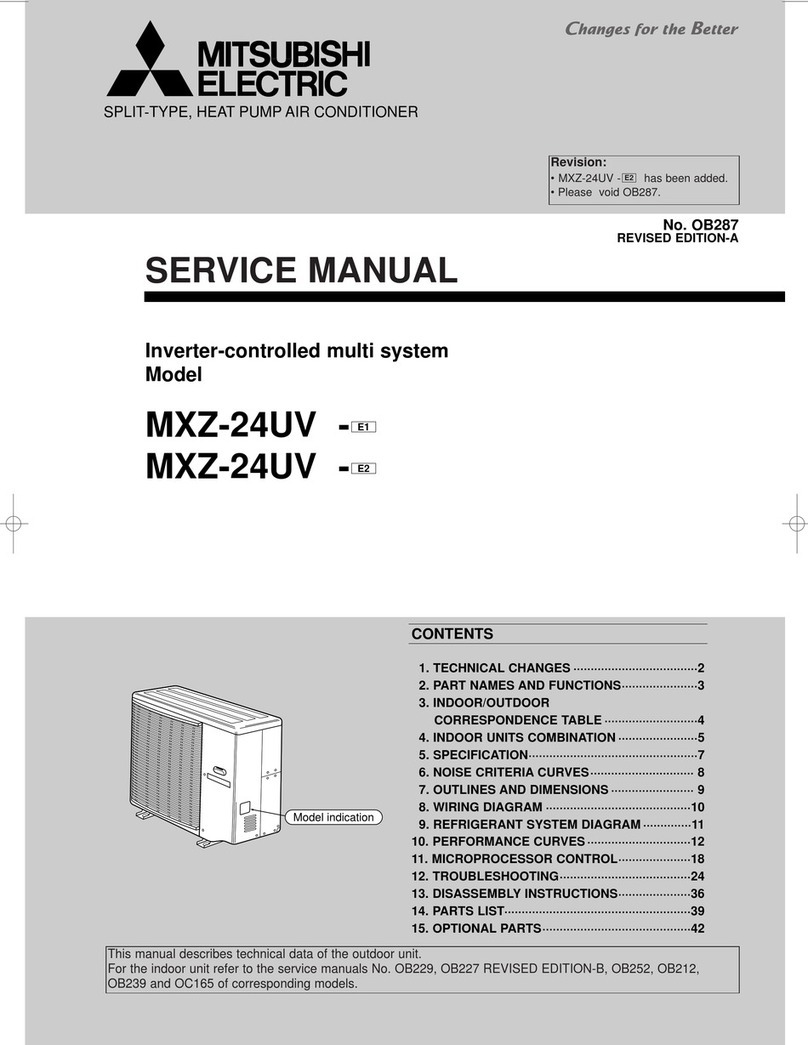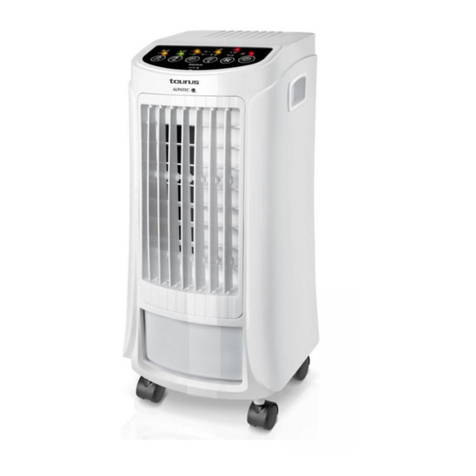4) Self-Diagnostic Feature Indicates Faults Instantly
Inthe rare case when a problem occurs, the unit stops operating and the set temperature indicator changes to the
self-diagnostic indicator, indicating the location of the fault.
If the check switch is pressedtwice, the unit stops operating and the check mode is initiated. The cause of the most
recent problem stored in the memory is displayedon the LCD. This is extremely useful for maintenance purposes.
5)
Useful Memory Feature for Storing Instructions
The previous set value is memorized so that constant temperature control can be obtained. This is convenient when,
for example, a power failure occurs.
(2)
Non-polarTwo-Wire Remote Controller Cables
The non-polar, two-wire type remote controller cable isslim, installation issimpleand troublefree. Remotecontroller wire
can be extended up to
550
yards.
6.
INNOVATIVE SYSTEM CONTROL BY MICROPROCESSORS
The most significant feature of the series PL is the advancedmicroprocessorsystem control. Behindthe development ofthis
system is the recent world-wide trend inthe air conditioning of larger buildings, away from centralizedduct systems infavor
of a large number of individual split type units. There are a number of reasons for this: first, costly troublesome duct
installation is eliminated: second, the overall air conditioning balance is excellent; and third, operation cost is low, since
flexible control of each unit is possible. This system control was developed exclusively by Mitsubishi in the light of this
demand. Microprocessor control makes possible individual control, group control, control using two remote controllers,
remote on/off control and individual control without troublesome modifications to the equipment.
1)
Individual Control by Gathering Remote Controllers
A
Series PL unit is installed ineach room, and the remote controllers are gatheredtogether in a separate location, where
each unit is controlled individually.
Each remote controller is connected to its indoor unit by non-polar 2-wire cableto eliminate the possibility of miswiring.
Separation can be as much as
550
yards, making this type of control extremely easy to implement.
Thermistors inthe indoor unit maintain each room at its own individually set temperature.
This control system is excellentfor schoolsor kindergardens,where controls should be kept out of the reachof the pupils.
2)
Group Control by a Single Remote Controller
Inan application requring a number of air conditioner units in a large area on a singlefloor, upto
50
Series PL units can
be centrally controlled using a single remote controller. The remote controller controls Power ON-OFF, set temperature,
fan speed, ON-OFF timer, and auto vane position of all units of the group. Obviously, if all the unitsstarted simultaneous-
ly, the surge currentwould be unacceptably high. Thereforethe microprocessor boardof each indoor unit has a 8-toggle
DIP switch that can be programmed to give sequential starting with up to
50
seconds delay. When the switch of the
remote controller is pressed, master unit comes on immediately, followed by the other units in the programmed order.
Thereafter the thermistor in each indoor unit controls compressor operation to keep the room at the set temperature.
The remote controller is connected to indoor units by non-polar 2-wire cable. Total cable length can be as muchas
550
yards. This system can be applied to the air conditioning of large offices or conference rooms, supermarkets, etc.
3)
Control UsingTwo Remote Controllers
Two remote controllers can be used to control either one unit or several units in group control. This makes it possible
to control units with ease either from a distance or at close range. Units operate according to the last command from
either remote controller.
4) Both Remote
ON/OFF
Control and Individual Control
All units can be turned on and off simultaneously using the remote ON/OFF switch, and also individual units can be
controlled from the remote controllers.
This system is well suited to buildings having a large number of rooms. In offices, for example, all units can be started
together to coolthe premisesbeforeworkers arrive, operatedas necessaryby individual remote controllers during the day,
and stopped together at the end of business.

